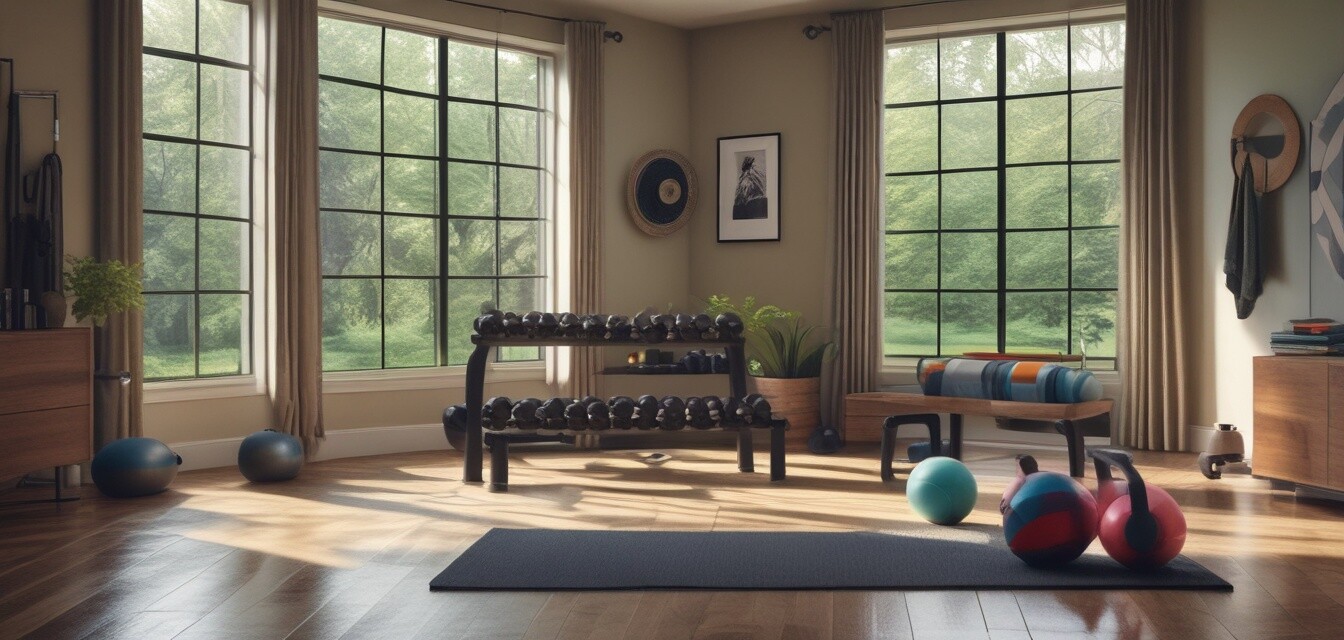
Best Functional Fitness Gear for Home Workouts
- Functional fitness equipment is versatile and adaptable for various workouts.
- Choosing the right gear can enhance your workout experience and effectiveness.
- Incorporating a mix of weight training, bodyweight exercises, and accessories can maximize results.
Functional fitness is all about making your workouts more applicable to everyday activities, enhancing strength, balance, and coordination. Having the right gear at home can transform your fitness journey, allowing you to tailor workouts to your specific needs and preferences. In this guide, we will explore an array of functional fitness gear that can elevate your home workouts, ensuring versatility and effectiveness for a variety of exercises.
Why Choose Functional Fitness Gear?
Functional fitness equipment is designed to improve everyday movements. This gear typically focuses on multi-functional uses, allowing you to perform a wide range of exercises rather than being limited to one specific movement. Below are a few reasons why functional fitness gear is essential for home workouts:
- Enhances strength and endurance.
- Improves balance and coordination.
- Helps with weight management.
- Offers versatility for various fitness levels.
Essential Functional Fitness Gear
Here is a list of the most effective functional fitness gear that should find its way into your home gym:
| Equipment | Benefits | Suggested Use |
|---|---|---|
| Dumbbells | Versatile for strength training and core workouts. | Incorporate into various exercises like squats and lunges. |
| Kettlebells | Great for full-body workouts, improving grip strength. | Use for swings, deadlifts, and Turkish get-ups. |
| Resistance Bands | Ideal for building strength and flexibility; lightweight. | Perfect for bodyweight exercises, stretching, and rehab. |
| Medicine Balls | Excellent for improving core strength and explosive power. | Utilize for slams, throws, and twists. |
| Yoga Mats | Provides stability and comfort for floor exercises. | Essential for yoga, stretching, and bodyweight workouts. |
How to Choose the Right Equipment
Choosing the right functional fitness gear can be daunting. Here are some tips to help you make the best decisions:
Beginners Section
- Assess your fitness level and goals.
- Start with basic equipment that allows for a variety of exercises.
- Consider space limitations—select compact gear if you have limited room.
- Look for adjustable weights for expanded workout versatility.
Creating a Balanced Home Workout Routine
Having the right gear is just one part of the equation. It’s essential to create a balanced workout routine that incorporates different fitness modalities. Here’s a simple framework:
- Strength Training: 2-3 times a week. Use dumbbells and kettlebells for resistance.
- Cardio: 2-3 times a week. Incorporate bodyweight exercises or HIIT routines.
- Flexibility: 1-2 times a week. Utilize yoga mats for stretching and recovery.
Frequently Asked Questions
1. How do I set up a home workout space?
Choose a dedicated area with enough room for movement, adequate lighting, and proper ventilation. Make sure you have easy access to your gear to ensure a smooth workout flow.
2. Can I achieve fitness goals without a gym membership?
Absolutely! With functional fitness gear and a structured plan, you can achieve significant gains right at home.
3. How much space do I need for a home gym?
Starting small is fine. Focus on a space where you can comfortably perform your exercises without hindrance.
Conclusion
Investing in functional fitness gear is a smart move for anyone serious about home workouts. With the right equipment, you can create a versatile routine that covers strength, cardio, and flexibility, helping you achieve your fitness goals without the need for a gym. Remember to choose wisely, create a balanced approach, and enjoy the journey of fitness. For more tips on selecting the best equipment, visit our Buying Guides section.
Pros
- Versatile and adaptable for various workouts.
- Helps build strength and improve overall fitness.
- Space-efficient equipment available.
- Cost-effective compared to gym memberships.
Cons
- Requires upfront investment.
- Limited by home space and storage.
- Risk of improper use without guidance.
- May lack access to specialized equipment.